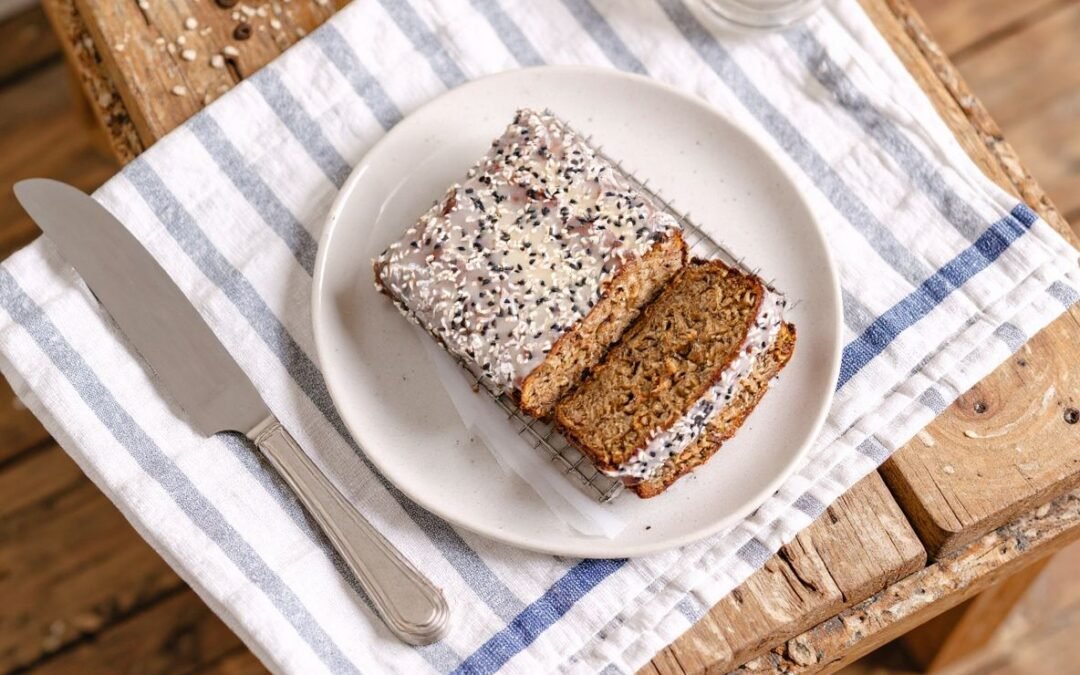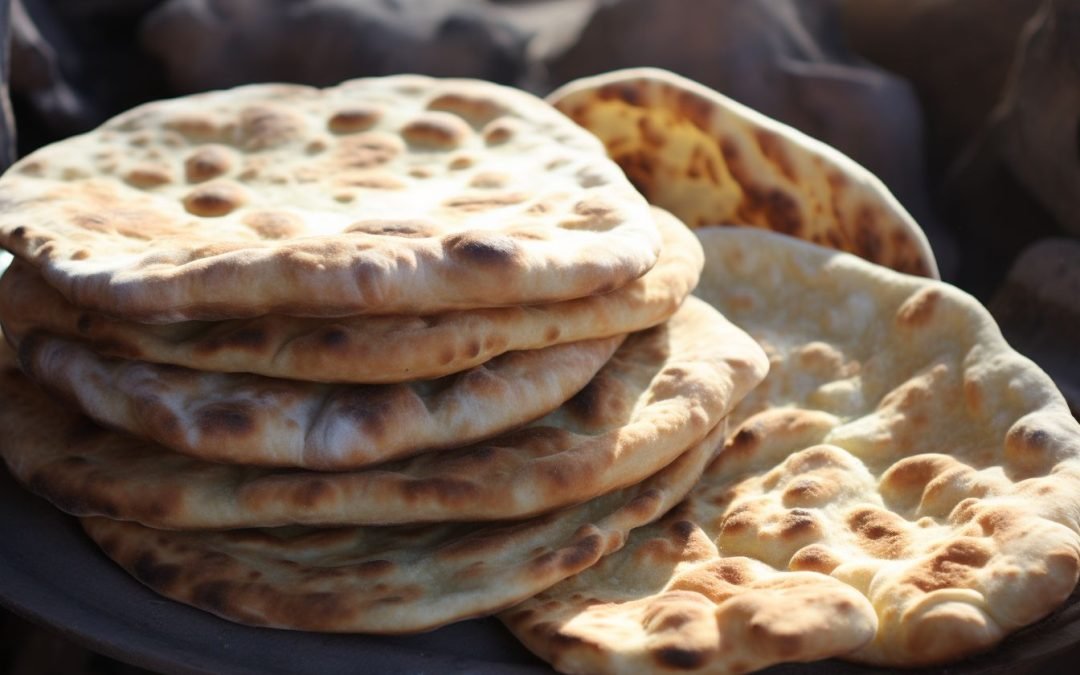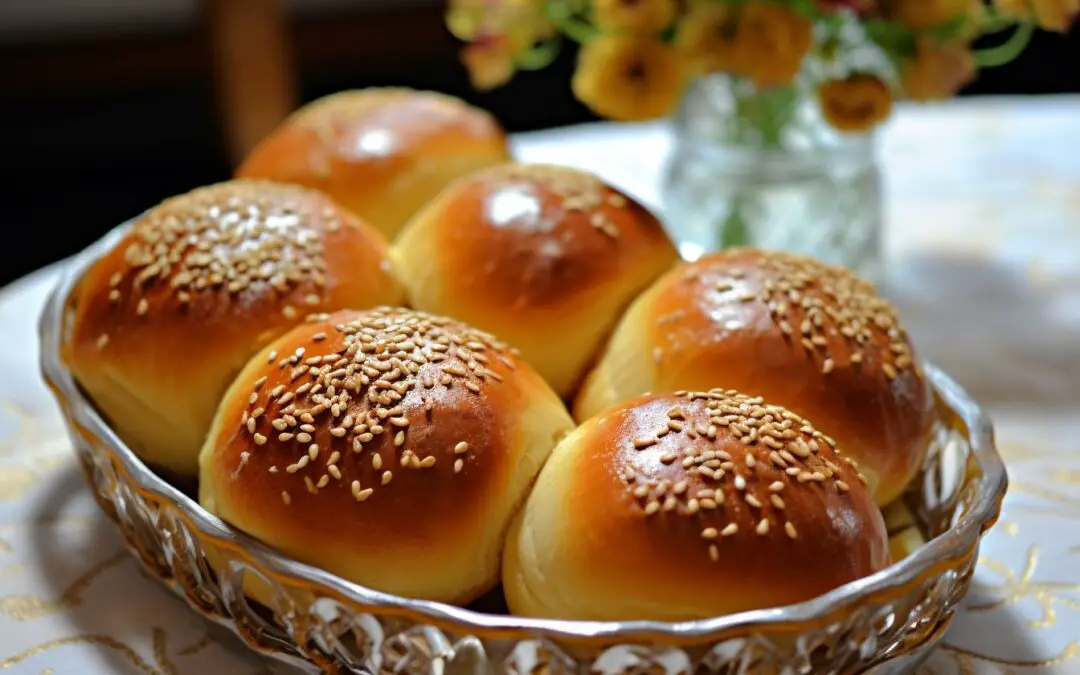Making Jachnun at home may seem daunting, but with a little patience and practice, it is possible to recreate this delicious bread in your own kitchen. In this article, I will share my experience of making homemade Yemenite jachnun bread from scratch and provide step-by-step instructions on how to make this beloved Yemenite bread.
A friend of mine introduced me to Yemenite cuisine and insisted we try the Yemenite jachnun bread at a local restaurant in Manhattan. The aroma of the freshly baked bread wafted through the air as we eagerly waited for our breakfast to arrive. As soon as they served us the piping hot bread, I knew I was in for a treat.
Jachnun is a traditional Yemenite bread made from dough that is rolled out thin, brushed with butter and honey, and then baked overnight in a low-temperature oven. The result is a flaky, buttery, and slightly sweet bread that is typically served with a side of grated tomato, a hard-boiled egg, and a spicy condiment called zhug. While traditionally you eat jachnun for breakfast on Saturday mornings in Yemenite households, it has gained popularity in other parts of the world as well.
As I sat down at the restaurant, a young Middle Eastern waiter brought a dish to the table that I had never seen before. It was a golden-brown, flaky pastry that looked both delicious and intriguing. When I asked the waiter what it was, he replied, “jachnun bread, a traditional Yemenite dish.”
While jachnun bread may seem intimidating to make at home, it is actually quite simple with the right ingredients and technique. The key is to use clarified butter, which gives the pastry its signature buttery flavor and flaky texture.
Overall, jachnun bread is a unique and delicious dish that is definitely worth trying. Its rich history and cultural significance make it a must-try for anyone interested in Middle Eastern cuisine.
While we were enjoying our meal, I heard a loud crash. I turned around to see that a traditional Yemenite musical instrument displayed as decoration had fallen to the ground and shattered into pieces. The customer who accidentally broke it looked mortified and apologized profusely. The owner said to the customer that it was okay and that accidents happen.
After trying Jachnun bread at that Yemenite restaurant, its deliciousness blew me away. I knew I had to try making it at home. So, after the commotion settled, I approached the restaurant chef and requested the recipe. To my surprise, he agreed to give it to me!
I was extremely happy to have the recipe. So, here are the ingredients he gave me: flour, water, oil, sugar, salt, and honey.
When it comes to enjoying warm, flaky jachnun bread, there are a variety of dishes that you can have alongside it to complement its unique flavor and texture. Here are a few of my favorite options:
- Schug: This spicy Yemenite hot sauce is a must-have with jachnun. It contains fresh herbs, garlic, and hot peppers, and adds a burst of flavor to every bite.
- Tomato Dip: A simple tomato dip made with ripe tomatoes, garlic, and olive oil is a perfect complement to jachnun. The acidity of the tomatoes balances out the richness of the bread.
- Hard-Boiled Eggs: A classic accompaniment to jachnun, hard-boiled eggs that you can have alongside the bread for breakfast or brunch.
- Israeli Salad: A refreshing mix of diced cucumbers, tomatoes, and onions tossed with lemon juice and olive oil, Israeli salad is a light and healthy side dish that pairs well with Jachnun.
- Hummus: While not traditionally served with jachnun, hummus is a delicious addition to any meal. Its creaminess and earthy flavor complement the bread nicely.
Overall, jachnun is a versatile bread that you can enjoy with a variety of dishes. Whether you prefer something spicy, tangy, or refreshing, there’s a perfect accompaniment for this delicious Yemenite bread.
History of Yemenite Jachnun Bread
Jachnun is a traditional Yemenite bread that is typically served on the Jewish Sabbath. It is made by rolling out the dough very thinly, brushing it with oil, and then baking it slowly in a low-temperature oven for many hours until it becomes golden brown and crispy.
The origins of jachnun are somewhat unclear, but it is believed to have originated in Yemen, where it was traditionally served for breakfast. The word “Jjchnun” comes from the Arabic word “jahn,” which means “rolled up.”
Jachnun was brought to Israel by Yemenite Jews who immigrated to the country in the mid-20th century. Today, it is a popular dish throughout Israel, and it is often served with a variety of accompaniments, such as tomato sauce, grated tomato, and zhug (a spicy Yemenite condiment made from chilies, garlic, and cilantro).
In recent years, jachnun has gained popularity outside of Israel, and it can now be found in Jewish communities around the world. Its unique taste and texture have made it a beloved dish among those who have tried it.
Overall, Jachnun is a delicious and unique bread with a rich history and cultural significance. Its popularity continues to grow, and it is sure to remain a beloved dish for generations to come.
Ingredients
To make homemade Yemenite Jachnun bread, I need to gather a few key ingredients. Here’s what I need:
- 8 cups of flour
- 1/2 teaspoon of baking powder
- 4 teaspoons of salt
- 1/4 cup of sugar
- 1/2 cup of vegetable oil
- 3 cups of room-temperature water
- 2 tablespoons of honey
- 1 egg (optional)
How to Make Homemade Yemenite Jachnun Bread?
Dough Preparation
- To make homemade Yemenite jachnun bread, I start by preparing the dough. First, mix the water, sugar, and honey in a bowl. Stir until the sugar is completely dissolved in the water.
- Add the flour, baking powder, and salt to the bowl. Use a mixer and stir the mixture until it forms a sticky dough (approx. 3-4 minutes).
- Cover the bowl with a kitchen towel and let it rest for 5 minutes.
- Using moistened hands, reach down the sides of the bowl and gently lift the dough from the center to stretch it. Allow it to fall back down, dampen your hands again, and fold the sides of the dough up and over to develop gluten strength. Rotate the bowl a quarter turn each time you stretch and fold the dough. Cover the dough with a clean kitchen towel and let it rest at room temperature for approximately an hour.
- Divide the dough into 12 smaller balls and let them rest uncovered for 5-10 minutes
Rolling and Folding
- Once the dough balls have rested, Take it out of the bowl and divide it into 6 equal pieces.
- Roll each ball into a thin, rectangular shape. Handle the dough with care and gradually stretch it until it reaches an almost transparent state, ensuring it becomes extremely thin.
- Next, Brush the dough with a mixture of oil and butter, and then fold it into thirds, like a letter.
- Repeat this process 2 more times, brushing the dough with the oil and butter mixture each time. This creates layers in the dough, which will give the jachnun its flaky texture.
Baking Process
- After folding the dough, Wrap each piece tightly in plastic wrap and let it rest in the refrigerator overnight. This allows the dough to develop its flavor and become more tender.
- The next day, Preheat the oven to 200°C and take the dough out of the refrigerator.
- Brush each piece with a mixture of beaten egg and water, which gives the jachnun its golden color.
- Arrange the jachnun rolls in the designated round jachnun pan (linked above), creating two layers of jachnun within a single pan.
- Cover the pan with its lid or tightly seal it with aluminum foil, then bake at 225°F for 10-12 hours.
- Serve it hot with fresh tomato sauce, grated tomato, and a hard-boiled egg.
That’s it! With a little patience and practice, anyone can make delicious homemade Yemenite jachnun bread.
Serving Suggestions
When it comes to serving Jachnun, it’s all about the toppings and sides. Here are some of my favorite ways to serve this delicious Yemenite bread:
1. Traditional Toppings
The most traditional way to serve Jachnun is with a dollop of fresh tomato paste, a sprinkle of grated hard-boiled eggs, and a drizzle of hot sauce. The combination of sweet, savory, and spicy flavors is simply irresistible.
2. Sweet and Savory
For a unique twist, try serving Jachnun with a sweet and savory topping. Spread some date, and honey, on top of the bread and sprinkle on some crumbled feta cheese. The sweetness of the honey pairs perfectly with the salty feta.
3. Breakfast Sandwich
Jachnun makes a great base for a breakfast sandwich. Slice the bread in half and add a fried egg, some sliced avocado, and a few pieces of crispy bacon. It’s a hearty and satisfying breakfast that will keep you full all morning.
4. Dipping Sauce
Jachnun is also great for dipping. Serve it with a side of tahini sauce or hummus for a delicious and healthy snack.
No matter how you choose to serve it, jachnun is a delicious and versatile bread that is sure to impress your guests. Try out these serving suggestions or come up with your own unique toppings and let your taste buds be the judge.
Nutritional Facts
When it comes to homemade Yemenite jachnun bread, it’s important to know what you’re consuming. Here are the nutritional facts that you should be aware of:
- Calories: One serving of Jachnun bread (100g) contains approximately 400 calories.
- Protein: Jachnun bread is not a significant source of protein, with only 4-5 grams per serving.
- Carbohydrates: Jachnun bread is high in carbohydrates, with approximately 60-70 grams per serving.
- Fat: Jachnun bread is a high-fat food, with approximately 20-25 grams of fat per serving.
- Fiber: Jachnun bread is not a significant source of fiber, with only 1-2 grams per serving.
It’s important to note that while jachnun bread is high in calories and fat, it can be enjoyed as part of a balanced diet in moderation.
If you’re looking to reduce your calorie and fat intake, consider pairing your jachnun bread with a protein-rich food, such as eggs or cheese. Additionally, adding fresh vegetables or a salad to your meal can help increase your fiber intake and promote feelings of fullness.
Overall, jachnun bread is a delicious and unique food that can be enjoyed as part of a healthy and balanced diet.
Storing and Reheating
After making a batch of Jachnun, you may find yourself with leftovers. Luckily, jachnun is easy to store and reheat.
To store Jachnun, wait for it to cool down to room temperature. Then, wrap it tightly in plastic wrap or aluminum foil. Store it in the refrigerator for up to one week.
When it’s time to reheat your Jachnun, there are a few options. The easiest way is to microwave it for 30 seconds to one minute, depending on the power of your microwave. You can also reheat it in the oven at 350°F for 5-10 minutes.
If you want to maintain the crispy texture of the Jachnun, place it in the oven at 350°F for 10-15 minutes. This will help to crisp up the outside while keeping the inside soft and chewy.
It’s important to note that jachnun is best eaten fresh out of the oven. While reheating is an option, it may not have the same texture and flavor as when it was first made.
To make sure your jachnun stays fresh, avoid reheating it more than once. Reheating it multiple times can cause it to become dry and tough.
Overall, storing and reheating Jachnun is simple and easy. Just remember to wrap it tightly and reheat it properly to maintain its delicious flavor and texture.
Common Mistakes and Solutions
When making homemade Yemenite Jachnun bread, there are a few common mistakes that can happen. Here are some solutions to help you avoid these mistakes and make the perfect Jachnun bread every time.
Mistake: Dough is too dry
If your dough is too dry, it will be difficult to roll out and may crack. This can happen if you add too much flour or don’t add enough water.
Solution: Add more water
To fix this, add a little bit of water at a time until the dough is soft and pliable. Be careful not to add too much water, as this can make the dough too sticky.
Mistake: Dough is too sticky
If your dough is too sticky, it will be difficult to roll out and may stick to your hands and work surface. This can happen if you add too much water or don’t add enough flour.
Solution: Add more flour
To fix this, add a little bit of flour at a time until the dough is no longer sticky. Be careful not to add too much flour, as this can make the dough too dry.
Mistake: Jachnun is too hard
If your jachnun bread is too hard, it may be because you baked it for too long or at too high of a temperature.
Solution: Adjust baking time and temperature
To fix this, try baking your jachnun bread for a shorter amount of time or at a lower temperature. Keep an eye on it as it bakes to make sure it doesn’t burn.
By avoiding these common mistakes and following these solutions, you can make delicious homemade Yemenite jachnun bread every time.
Frequently Asked Questions
I’ve received many questions about making Jachnun, so I’ve compiled a list of the most common ones. Here are some answers to frequently asked questions about making homemade Yemenite Jachnun bread:
Can I make Jachnun without a special clay pot?
Yes, you can make jachnun without a special clay pot. However, using a clay pot will give you the best results. If you don’t have a clay pot, you can use a Dutch oven or any other oven-safe pot with a tight-fitting lid.
How long does it take to make Jachnun?
Jachnun is a time-consuming dish to make. The dough needs to be rolled out, brushed with oil, and then baked in a low-temperature oven for many hours. The total time it takes to make Jachnun is around 12-14 hours, including the time needed for the dough to rest and rise.
Can I freeze Jachnun?
Yes, you can freeze jachnun. After cooling, tightly wrap it in plastic wrap and then transfer it to a freezer-safe bag for storage. It can be frozen for up to three months. To reheat, remove from the freezer and let it defrost in the refrigerator overnight. Then, reheat it in a low-temperature oven until it is warmed through.
What should I serve with Jachnun?
Jachnun is traditionally served with fresh tomato sauce, hard-boiled eggs, and grated cheese. You can also serve it with a side of Israeli salad, hummus, and pickles.
Can I make Jachnun ahead of time?
Yes, you can make jachnun ahead of time. It can be stored in the refrigerator for up to three days. To reheat, wrap it in foil and place it in a low-temperature oven until it is warmed through.
I hope these answers help you in your Jachnun-making adventures!
Conclusion
In conclusion, making homemade Yemenite Jachnun bread is a fun and rewarding experience. It requires time and patience, but the result is worth it. Here are some key takeaways from my experience:
- The dough is sticky and can be difficult to work with, but don’t be discouraged. Just keep working with it and eventually, it will become more manageable.
- Rolling the dough into thin layers is crucial for achieving the desired texture and flavor.
- The overnight baking process allows the bread to fully develop its flavor and texture. Don’t rush this step!
- Jachnun pairs well with a variety of toppings, such as tomato sauce, grated cheese, and hard-boiled eggs.
Overall, I highly recommend giving homemade jachnun a try. It’s a unique and delicious bread that is sure to impress your friends and family. Happy baking!





